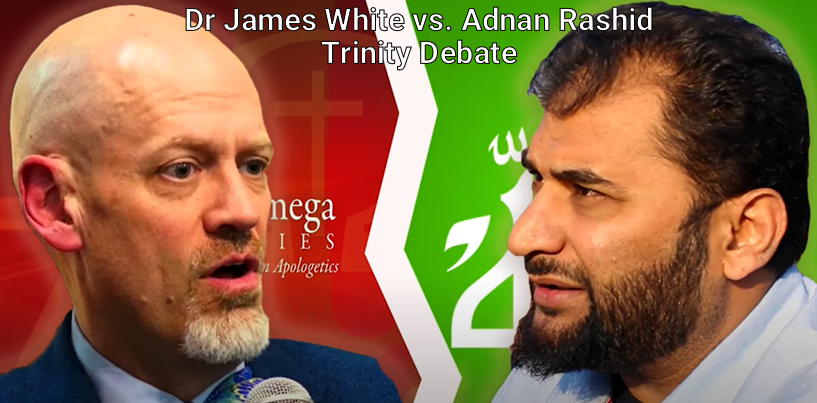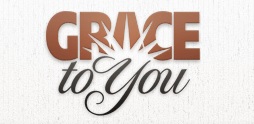[Repeat of series introduction that began on 17 December 2023: Where would you go today in the Old Testament to argue that Jesus is the Christ? There’s so much to this that cannot be dismissed. We’re given in many ways what the Messiah would be like, what his character would be, how he’d be received (even by different people), what he’d do, how he’d redeem, that we’d have his lineage, what he’d say, how it would all end, how he’d come and more. So much, and we see it all done in just one man! How would you know that he is the promised Messiah? Jesus’ birth, life, suffering, and glorification all demonstrate the facets of his excellent work. Jesus himself asked two of his disciples the same question I could ask you today, and then went to the same source to explain it that I’d like to go to as well in this series: “Was it not necessary for the Christ to suffer these things and to enter into His glory?” Then beginning with Moses and with all the prophets, He explained to them the things concerning Himself in all the Scriptures.” Luke 24:26-27. Jesus had to suffer to then enter into his glory he said. With this premise, he goes through some measure of the 39 books of the Old Testament revealing himself to them thereby. This is the same Old Testament we have today. I wish we were given the transcript of that talk, but God didn’t wish to give it. But can we see it? Many historical events in the Scriptures could be fulfilled by men and women, but no one but Jesus (Messiah) could fulfill them all. The Lord himself demonstrated that he was and is the Christ, and our New Testament reflects that its writers were well aware of this. The clear approach of the Apostles was to argue the same from the Bible that Jesus read- the 39 books we now call the Old Testament. To know what it means that Jesus is the Christ is to show the fulness of God’s revelation to mankind in the New Testament in him. In the Old Testament, God said he’d defeat sin and death; the New Testament shows us that work done. There are so many ways to talk of this. So many passages. I won’t exhaust them, but in this series, I wish to examine some of these passages. These passages are how I would prove Jesus is the Christ from the Old Testament].
Continuing on in Isaiah 53:5 we read:
But He was pierced through for our transgressions,
He was crushed for our iniquities;
The chastening for our well-being fell upon Him,
And by His scourging we are healed.
Anyone reading the Gospels knows that Jesus was pierced. His suffering, far more than anyone’s in Israel before, summarizes this passage’s fulness well. I would argue this from the Old Testament. His hands (in the wrists I believe) and his feet (through the Achilles tendons I believe for reasons I’m about to mention) were nailed to the wood of the Cross. He had thorns jabbed into his skull. Pierced. He was flogged (pierced) and even had a spear gouged into his side by an executioner to ensure he hadn’t just swooned. His lack of physical involuntary response confirmed he was dead. His knees weren’t therefore broken as with the others since it was said of him in the Psalms roughly four hundred years before Isaiah and thus roughly one thousand years before Jesus lived it out that, “He keeps all his bones, Not one of them is broken.” Psalm 34:20. This is why I don’t think his hands and feet were nailed through where the bones are. It also would not have been as efficient a way to crucify a person and keep them on the wood. But he was surely pierced. John, who was there watching him die that day, cites this Psalm in John 19:36 when he writes his Gospel. Consider the amazing complexity and the saliency of this point then over John’s life and witness, and what it means to show Jesus as the Christ, the Messiah from the Old Testament, the one here being pierced, crushed, chastened, and scourged.
As already stated, John sees the crucifixion as fulfillment of Psalm 34:20. John referred to himself as, “The disciple whom Jesus loved” in his Gospel at least five times. He loved Jesus. He was the one closest to him at the Last Supper on the night he was betrayed. He was one of the “inner three” disciples with James and Peter. He was the one Jesus entrusted his mother Mary to at his death as it would not appear that any of Jesus’ own brothers or sisters had yet believed. John was there no doubt mourning as Jesus was crucified. John, inspired by God the Holy Spirit, quotes the Psalms, as I’ve just said above, in John 19:36.
John then also cites Zechariah 12:10 in the next verse, John 19:37. Zechariah 12:10 says, “I will pour out on the house of David and on the inhabitants of Jerusalem, the Spirit of grace and of supplication, so that they will look on Me whom they have pierced; and they will mourn for Him, as one mourns for an only son, and they will weep bitterly over Him like the bitter weeping over a firstborn.” John and Mary (and many other disciples) had already received that “Spirit of grace” from Jesus. They got a small bit of a foretaste of him, but the promise of the Spirit in his New Testament fullness was still yet to come. Give it 40 days! Zechariah said that people will “mourn” at the one pierced. Consider the complexity here. The Roman soldiers who had “pierced” Jesus weren’t mourning. Pilate wasn’t. The Pharisees there who hated Jesus weren’t mourning. John and Mary were. Zechariah 12 begins with “Thus declares the Lord…” It is clearly Yahweh talking throughout the chapter. Look at vs. 10 again with me. Zechariah 12:10: “…they will look on Me whom they have pierced.” On “me.” Now, there’s nothing particularly special or unusual about the Hebrew word translated “me” here. It’s just “ale” in Hebrew or “ego” in the Greek and means what it means in English as far as I can tell. The context of Zechariah 12, however, shows that this is Yahweh. In other words, what God’s declaring is that they will look upon “me” whom they have pierced. This is not just an eschatological glance forward, or a talk of any of Israel’s sad situations. God was pierced and the people will see it. This is part of the argumentation that Jesus is the Christ. God incarnate.
Jesus’ body was a purifying sacrifice for the sins of his people. Isaiah 53:5 (our passage today with emphasis) says, “He was pierced through for our transgressions, He was crushed for our iniquities;
The chastening for our well-being fell upon Him, and by His scourging we are healed.” “Our…our…our…we.” John would not understand this anymore than you or I would without the Law long ago given to Moses. In Leviticus 16:15-16 we read, “Then he [the high priest in Israel] shall slaughter the goat of the sin offering which is for the people, and bring its blood inside the veil and do with its blood as he did with the blood of the bull, and sprinkle it on the mercy seat and in front of the mercy seat. He shall make atonement for the holy place, because of the impurities of the sons of Israel and because of their transgressions in regard to all their sins; and thus he shall do for the tent of meeting which abides with them in the midst of their impurities.” There was a lot of ceremony on this day, but the blood shed atoned. It wasn’t the animal’s sin its blood was shed for, it was a preparation picture for God’s people of the Messiah. It was for “the impurities of the sons of Israel and because of their transgressions in regard to all their sins” that the animals were slain. But this blood was not like Christ’s. The Law had only a shadow of what was to come, and as a New Covenant ambassador I’m all about that which cast the shadow, which is the life and ministry of the risen Christ. The sacrifice now living. His bleeding heals. We died, he died, he rose, we’ll rise. On him was laid the sins of others. The sacrifices of Yom Kippur would continue on and on and on. When the High Priest brought the blood into the tabernacle or the temple, he would see on the mercy seat the blood from last year. It would not and could not end under God’s Old Testament economy. But Christ, having “made purification of sins, sat down at the right hand of the Majesty on high.” Hebrews 1:3. Imagine a high priest coming out of the temple one day with the bowl of blood in his hands, dressed up marvelously for the occasion, sitting down and saying, “God says that’s it! That’s the last one! All sins past, all sins of today, all sins of tomorrow, I have atoned for them all completely!” That’s exactly what the Messiah did! He finished it. All upon whom this blood is sprinkled will have mercy. They will have their transgressions and iniquity pardoned, their well-being will be granted to them, and their healing will be unto eternal life. They will then work the works of such upon whom such honor has come.
God bless!!!
(If this has been a blessing to you, would you please share it with someone else? Come by Biblecia.com anytime for new stuff).







